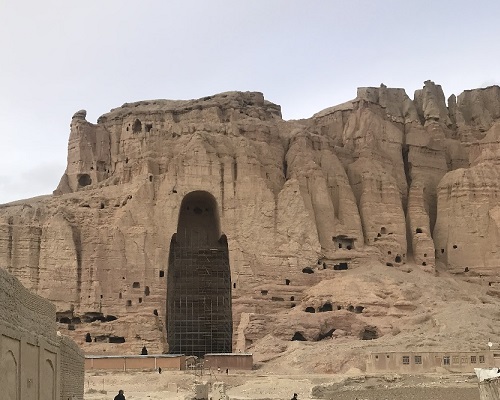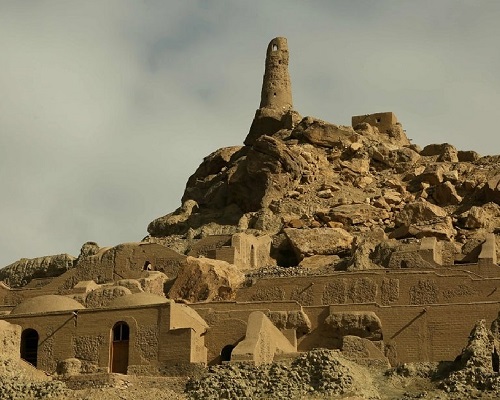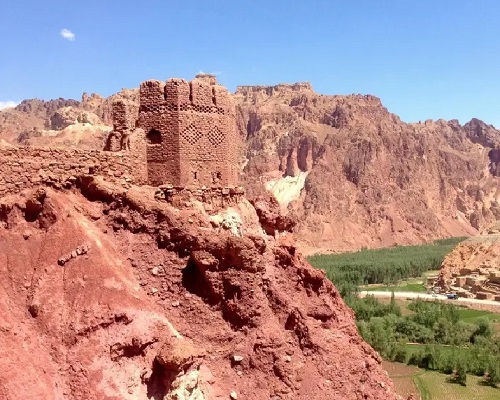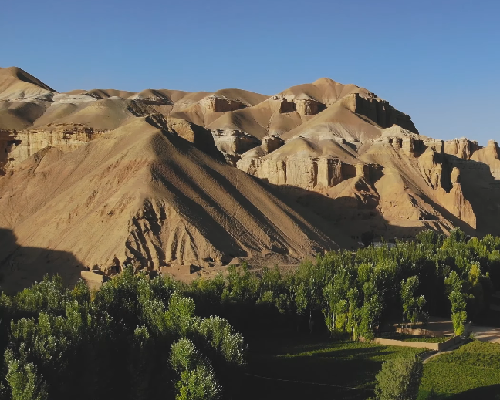
EXPLORE BAMIYAN
Discover the breathtaking landscapes of Bamiyan, Afghanistan on a culturally-rich adventure

Bamyan, a province famed for its stunning natural beauty and historical significance, offers an unforgettable journey into Afghanistan's heartland.
Known for the iconic Buddhas of Bamyan, which once stood as towering symbols of Buddhist heritage, the province is a blend of awe-inspiring landscapes and ancient history.
Visitors can explore the surrounding caves and monasteries, as well as the breathtaking Band-e-Amir National Park, renowned for its series of turquoise lakes. Bamyan is a destination where history, culture, and natural beauty converge, providing an enriching experience for all who visit.
Attractions
The Buddha Niches in Bamiyan Valley stand as somber sentinels to Afghanistan’s pre-Islamic history, marking the site where two colossal Buddha statues were carved into the cliffside over 1,500 years ago.
Although the statues themselves were lost to history, the niches remain, set against the dramatic backdrop of Bamiyan’s rugged landscape.
These towering hollows, a UNESCO World Heritage site, continue to draw visitors from around the world, offering a poignant reminder of the region’s historical significance as a center of religious learning and artistic achievement, and the enduring spirit of cultural resilience.

Band-e-Amir National Park is a natural wonder that seems to emerge from the pages of a fairy tale.
Comprising six interconnected lakes set against the stark backdrop of rugged cliffs, this park is Afghanistan’s first national park, heralded for its breathtaking beauty.
The vivid blue waters, created by high mineral content, contrast dramatically with the surrounding desert landscape, offering a serene and picturesque setting.
A visit to Band-e-Amir is a journey into an almost surreal landscape, where nature’s artistry is on full display, inviting adventurers, nature enthusiasts, and those seeking solace in the beauty of the natural world.

The ruins of Shahr-e Gholghola, also known as the ‘City of Screams,’ sit atop a hill overlooking the Bamiyan Valley.
This ancient fortress city, steeped in legend and history, earned its somber name from the tragic events that led to its downfall during the Mongol invasion.
Today, visitors can explore the haunting ruins, where the echoes of the past seem to resonate through the silent stones.
The site offers not only a glimpse into Afghanistan’s tumultuous history but also panoramic views of the surrounding valley, making it a compelling destination for those interested in the layers of human history woven into this landscape.

Perched on the outskirts of the Bamiyan Valley, the ancient ruins of Shahr-e Zuhak, known as the ‘Red City,’ cling to the vivid red-hued cliffs that give the site its name.
This historic fortress, dating back to the Sassanian era, was once a strategic military outpost that guarded the approaches to Bamiyan.
Over centuries, it bore witness to the ebb and flow of empires and invaders.
Now, its crumbling walls and towers offer a silent testament to the resilience of the Afghan landscape and its people.
A visit to Shahr-e Zuhak is a journey through time, set against the dramatic natural beauty of the region.

In the heart of Bamiyan lies Dara-e Ajdahar, also known as Dragon Valley, a place where nature and legend intertwine.
The valley is named for its remarkable natural rock formation, which, from certain angles, appears to resemble a dragon resting in the rugged terrain.
This geological wonder is not just a testament to the natural beauty of Afghanistan but also a canvas for the rich tapestry of local folklore that adds a mystical allure to the landscape.
Hiking through Dragon Valley offers a unique blend of outdoor adventure and cultural exploration, as visitors are invited to marvel at the natural formations and immerse themselves in the legends that have shaped the identity of this enchanting region.

The Kakrak Valley, nestled near Bamiyan, houses a smaller yet significant Buddha niche and numerous ancient rock carvingsthat provide a window into the area’s rich Buddhist heritage.
This secluded valley, once part of a thriving monastic community, today offers a tranquil setting where visitors can explore the remnants of meditation caves, stupa bases, and intricate carvings that adorn the cliff faces.
The serene atmosphere and the tangible sense of history that pervades the Kakrak Valley make it an essential stop for those seeking a deeper understanding of the spiritual and cultural currents that once flowed through this region.

The Foladi Valley, a short distance from Bamiyan, is a haven of natural beauty and tranquility.
Known for its crystal-clear streams, lush vegetation, and rich biodiversity, the valley offers a network of trails that invite hikers and nature enthusiasts to explore its untouched landscapes.
The diverse flora and fauna, coupled with the dramatic mountain scenery, provide a perfect setting for outdoor activities and wildlife observation.
For those looking to escape the beaten path and immerse themselves in the serene beauty of Afghanistan’s countryside, Foladi Valley offers an idyllic retreat into nature.
Sign off here. We will reply in 24 hours with futher details.